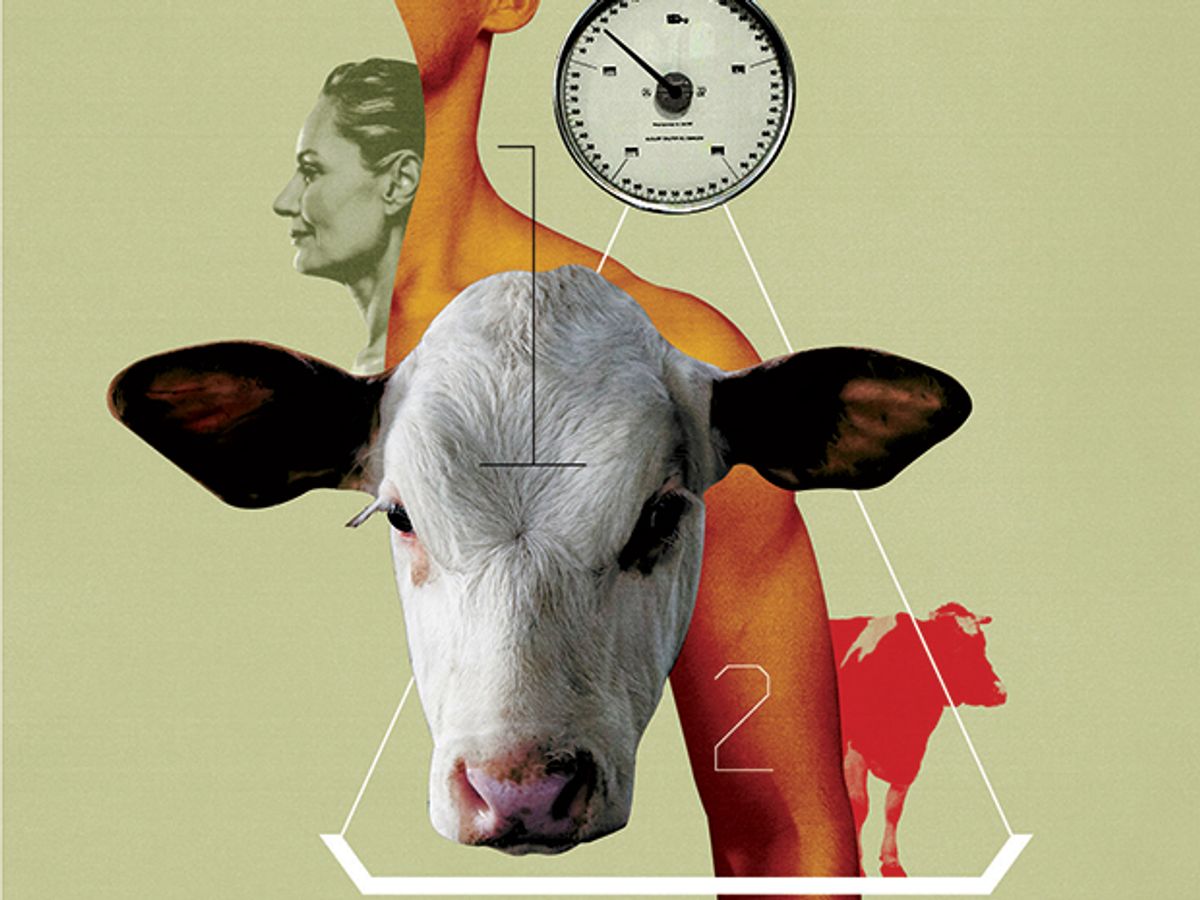For years I have tried to imagine how Earth would appear to a comprehensive and discerning probe dispatched by wonderfully sapient extraterrestrials. Of course, the probe would immediately conclude, after counting all organisms, that most individuals are either microscopic (bacteria, archaea, protists, fungi, algae) or very small (insects) but also that their aggregate weight dominates the planetary biomass.
That would not be really surprising. What these tiny creatures lack in size they more than make up in numbers. Microbes occupy every conceivable niche of the biosphere, including many extreme environments. Bacteria account for about 90 percent of the human body’s living cells and as much as 3 percent of its total weight. What would be surprising, however, is the picture the probe would paint of the macroscopic forms of animal life, which is dominated by just two vertebrates—cattle (Bos taurus) and humans (Homo sapiens), in that order.
Unlike the extraterrestrial scientists, we do not get an instant readout. Even so, we can quantify cattle zoomass and human biomass (anthropomass) with a fair degree of accuracy. The numbers of large, domesticated ruminants in all high-income countries are known, and they can be reasonably estimated for all low-income and even pastoral societies. The Food and Agricultural Organization of the United Nations puts the global cattle count at about 1.5 billion head in 2015.
To convert these numbers into living ruminant zoomass requires adjustments for age and sex distribution. Large bulls weigh more than 1,000 kilograms (about 2,200 pounds); American beef cows are slaughtered when they reach nearly 600 kg, but Brazilian cattle go to market at less than 230 kg; and India’s famous Gir milk breed weighs less than 350 kg when mature. A good approximation is to assume an average sex- and age-weighted body mass of 400 kg; that implies a total live cattle zoomass of some 600 million metric tons.
Similarly, when calculating the total mass of humanity it is necessary to consider the age and body weights of populations. Low-income countries have much higher shares of children than affluent nations (in 2015 about 40 percent in Africa compared to about 15 percent in Europe). At the same time, the rates of overweight and obese people range from the negligible (in Africa) to 70 percent of the adult population (United States). That is why I am using specific means for different continents derived from available population age and sex structures and from anthropometric studies and growth curves for representative countries. That complex adjustment produces a weighted mean of about 50 kg per capita, which, given a total of 7.4 billion people, implies a global anthropomass of about 370 million metric tons in 2015.
This means that the cattle zoomass is now at least 60 percent larger than the anthropomass and that the live weight of the two species together is about one billion metric tons. Even the largest wild mammals add up to only a small fraction of those masses: The 350,000 savanna elephants in Africa, with an average body weight of 2,800 kg, have an aggregate zoomass of less than one million metric tons, less than 0.2 percent of cattle zoomass.
The aggregate mass of cattle and humans is crushingly larger than the total mass of all wild vertebrates, and it clearly leaves too little space for the multitude of other species. Cows and men occupy much of the available land, consume much of its photosynthetic product, and generate an increasing amount of greenhouse gas.
No wonder we are in the midst of mass-scale species extinction, with no readily acceptable and effective relief in sight. By 2050 there will be 9 billion people and, most likely, 2 billion cattle, together augmenting their already crushing dominance of Earth.
Vaclav Smil writes Numbers Don’t Lie, IEEE Spectrum's column devoted to the quantitative analysis of the material world. Smil does interdisciplinary research focused primarily on energy, technical innovation, environmental and population change, food and nutrition, and on historical aspects of these developments. He has published 40 books and nearly 500 papers on these topics. He is a distinguished professor emeritus at the University of Manitoba and a Fellow of the Royal Society of Canada (Science Academy). In 2010 he was named by Foreign Policy as one of the top 100 global thinkers, in 2013 he was appointed as a Member of the Order of Canada, and in 2015 he received an OPEC Award for research on energy. He has also worked as a consultant for many U.S., EU and international institutions, has been an invited speaker in more than 400 conferences and workshops and has lectured at many universities in North America, Europe, and Asia (particularly in Japan).



